Plantago ovata, Desert Indianwheat
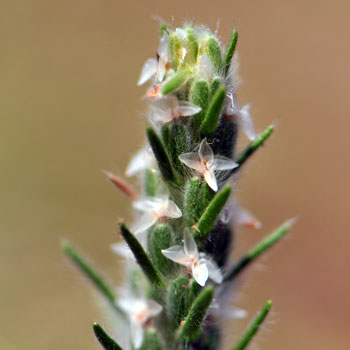
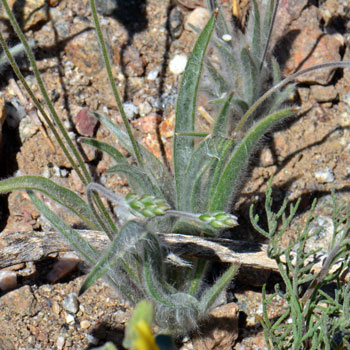
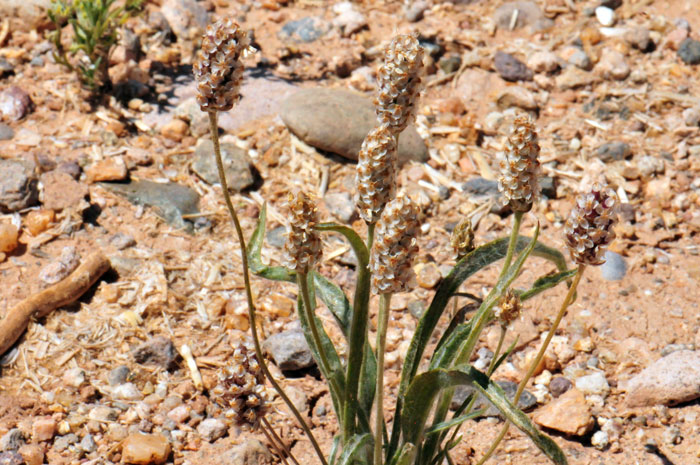
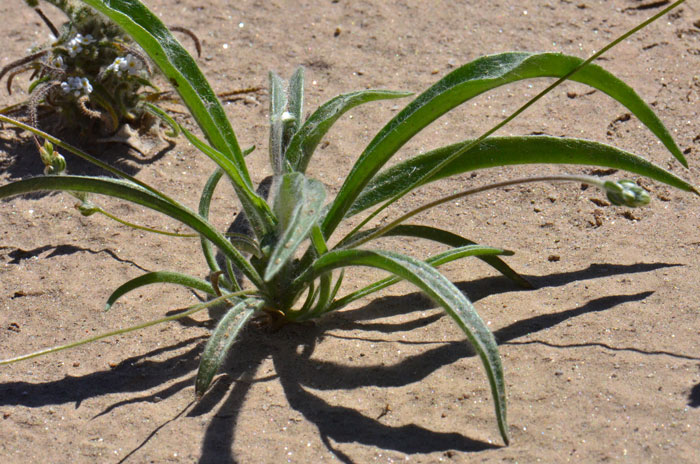
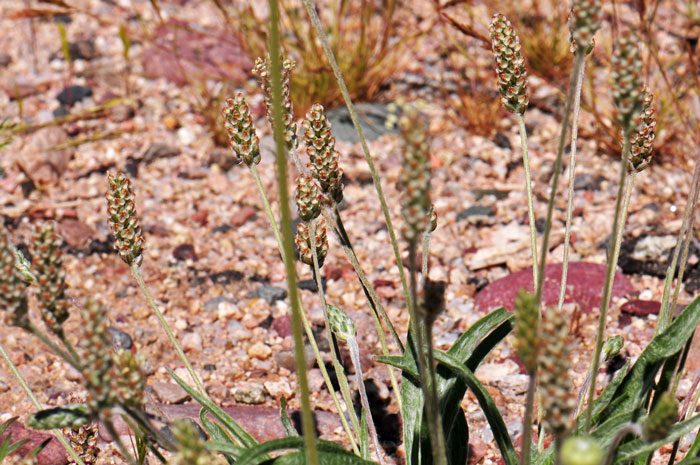
Scientific Name: Plantago ovata
Common Name: Desert Indianwheat
Also Called: Indian Wheat, Woolly Plantain (Spanish: Pastora, Mumsa)
Family: Plantaginaceae or Plantain Family
Synonyms: (Plantago brunnea, Plantago gooddingii, Plantago insularis, Plantago insularis var. scariosa, Plantago minima)
Status: Native (Jepson, 1993; may be alien, naturalized very early from the Mediterranean)
Duration: Annual
Size: Up to 10 inches more or less.
Growth Form: Forb/herb; silky pubescence
Leaves: Green; narrowly linear, sometimes oblong, leaf margins entire or with a few very small teeth.
Flower Color: White; inflorescence up to 11 inches or more, 1 or more spikes, spikes at maturity ¼ to 1½ inches long, seldom more than 4 times as long as wide, wholly, fruit
Flowering Season: January to May - with sufficient monsoon moisture again in fall.
Elevation: 3,000 feet or lower.
Habitat Preferences: Abundant on dry plains and mesas, prefers sandy or gravelly soils.
Recorded Range: Desert Indianwheat is found only in the southwester United States and Mexico. In the U.S. it is found in AZ, CA, NV, TX and UT. In Arizona it is abundant in most of the state but with few records in Apache, Greenlee and Santa Cruz counties. It is also native to Baja California, Mexico and the Mediterranean.
North America & US County Distribution Map for Plantago ovata.
U.S. Weed Information: No information available.
Invasive/Noxious Weed Information: No information available.
Wetland Indicator: In North America Plantago ovata has the following wetland designations: Arid West, FACU; Great Plains, FAC and Western Mountains, Valleys, and Coast, FACU.
FAC = Facultative, occur in wetlands and non-wetlands
FACU = Facultative Upland, usually occur in non-wetlands, but may occur in wetlands.
Threatened/Endangered Information: No information available.
There are approximately 12 species in Plantago in Arizona and New Mexico; 17 species in California and 15 species in Texas.
Comments: The type species (P. fastigiata) is from Pima Co., Tucson, Arizona.
In Southwest Desert Flora also see Common Plantain, Plantago major and Woolly Plantain, Plantago patagonica.
Desert Indianwheat has been used by the Pima as an anti-diarrheal and the herb was used for food. See ethno-botanical uses at Native American Ethnobotany, University of Michigan, Dearborn.

